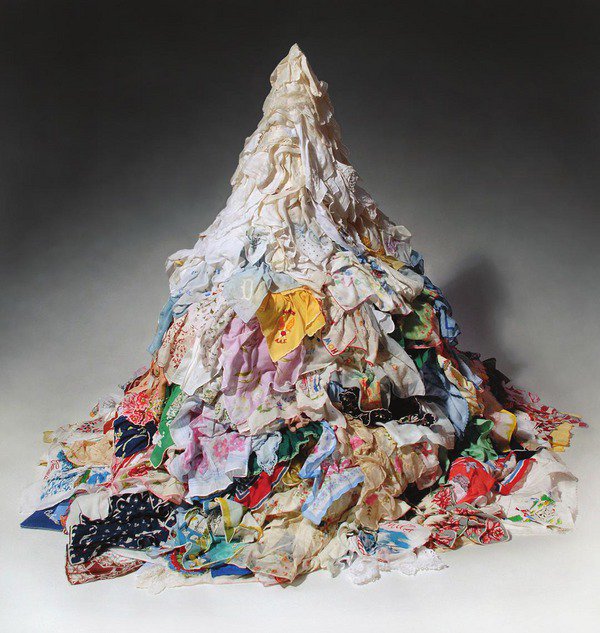Four exhibitions
dal 31/5/2012 al 6/7/2012
Segnalato da
31/5/2012
Four exhibitions
Packer Schopf Gallery, Chicago
Gary Dobry features new paintings made with actress/writer/film-maker. Catherine Jacobi's work emerges from among the most common references of nature and anatomy. Mark Crisanti makes works that are highly personal. Tim Vermeulen's series of paintings investigates a world of contradictions and paradox.

Gary Dobry
Life After Ed Paschke and Henry Miller
paintings
Gary Dobry will exhibit new paintings made of, and with, actress/writer/film-maker, Brenda Venus in a show titled "Life After Ed Paschke and Henry Miller". Dobry was a life-long friend and apprentice to world famous artist, Ed Paschke. Writer Henry Miller mentored Brenda Venus when Miller was in his eighties and Venus was still a very young woman. Miller's over 3,000 love letters to Venus were published by William Morris in a compilation titled, "Dear, Dear, Brenda". In the body of work to be exhibited at Packer Schopf, Dobry and Venus celebrate finding their own artistic voices after Paschke and Miller, and they join those voices to sing their praise. Earlier works by Gary Dobry in collaboration with Brenda Venus have been exhibited at the Henry Miller Library in Big Sur, California in 2010 and at the Zhou B Art Center in Chicago and the Jack Olson Gallery at Northern Illinois University in Dekalb, Illinois in 2011.
---
Catherine Jacobi
Collective Bargaining
sculpture
Catherine Jacobi¹s work emerges from among the most common references of
nature and anatomy. Form for Jacobi is the accumulation of time and
material. Common objects emerge from the simplest and most overlooked
materials. Years of collected newspapers, empty egg cartons, cast-off rubber
inner tubes, all bound to be trash or at the very least overlooked, are
intrinsic in the development of a new form that simultaneously leverages and
reinvents the previous histories of use. The material itself is a platform
from which she starts a piece considering a narrative that has already
existed and one that it is transformed into. Emotional connections are made
from what is already known. Layered quantities of exhausted bicycle inner
tubes are transformed into a dead baby elephant; the New York Times grows
into a tree stump and empty egg cartons birth dozens of women¹s pelvises.
Her work points to a common commentary that the novelty of form, which leads
you to believe that it will endure, only changes.
---
Mark Crisanti
National Geographic
paintings on found paper
Mark Crisanti is an artist unique to the contemporary art world, because he
strives to provide subtle elements in a straightforward manner that
collectively create an evocative work of art. The artist has a way of
connecting with the viewer by evoking a charm of a different era. He
incorporates recognizable imagery serving as a memoir to an older
generation. By pairing family-owned relics with figurative paintings, he
makes works that are both nostalgic, and highly personal. One of Crisanti¹s
most recent paintings creates dynamic visuals with a stark contrast of color
and form between foreground and background. In this untitled work, a bird in
a business suit is painted atop vintage National Geographic covers. Another
work is a portable artist¹s case for tubes and brushes, with a paint
palette. He adhered dictionary pages over the palette and in areas where
brushes and tubes of paint reside. He then painted a series of avian
portraits over the inside of the case and did a small scene over the
palette. Both pieces display the artist¹s ability to make work that is both
refined and intimate. The bird motif is a reference to his own past, as
bird watching was a favorite pastime of his Mother¹s. When she passed away,
one of the first items Cristanti found and then used in a work was a guide
to North American birds that his mother would often read. His very first
painting of a bird was a religious portrait of his Mother with a Robin¹s
head.
---
Tim Vermeulen
Labours of the Months
paintings
The Labours of the Months was one of the most popular themes of the Medieval
and Early Renaissance periods. There are countless painted and sculpted
versions of this subject. The pieces usually depict agricultural activities
that commonly occurred in the given months of the year and are often linked
to the signs of the Zodiac. Vermeulen¹s series of paintings takes the
traditional labours as a springboard for investigating a contemporary world
of contradictions, polarities, and paradox. He uses symbolic and
allegorical images, to create visual allegory that is deeply personal and
about our universal condition. Through autobiographical narratives,
displayed in self-portraiture, the work is part of a struggle for
self-discovery. For Vermeulen, painting is a similar process to the Turkish
expression ³to dig a well with a needle.² He patiently picks away at layers
that mask the true self. He discovers the world that makes the self what it
is. This approach is much like 15th century Northern European painting,
which heavily influences the technique and subject matter of his work. He is
particularly drawn to the saturated symbolism, quirky perspective and
layered surfaces. There is a peculiar way in which the meaning of this work
is married to the technique. One accesses the meaning of these paintings
through the process of their creation as well as through the subject matter.
The obsessive character of the technique of many Flemish artists seeks the
same home of conviction and insight that Vermeulen looks for in his work.
This is a particularly Northern form of expressionism that strains for
release not in big brushes and wild gestures but in a slow, painstaking
process.
Image: Catherine Jacobi, Everest, ladies handkerchiefs, thread, glue, 2012, 40" x 48" x 48"
Artists' Reception: Friday, June 1st, 2012, 5 8 PM
Packer Schopf Gallery
942 W. Lake - Chicago, IL 60607
Gallery Hours: Tuesday – Saturday 11:00 AM to 5:30 PM



